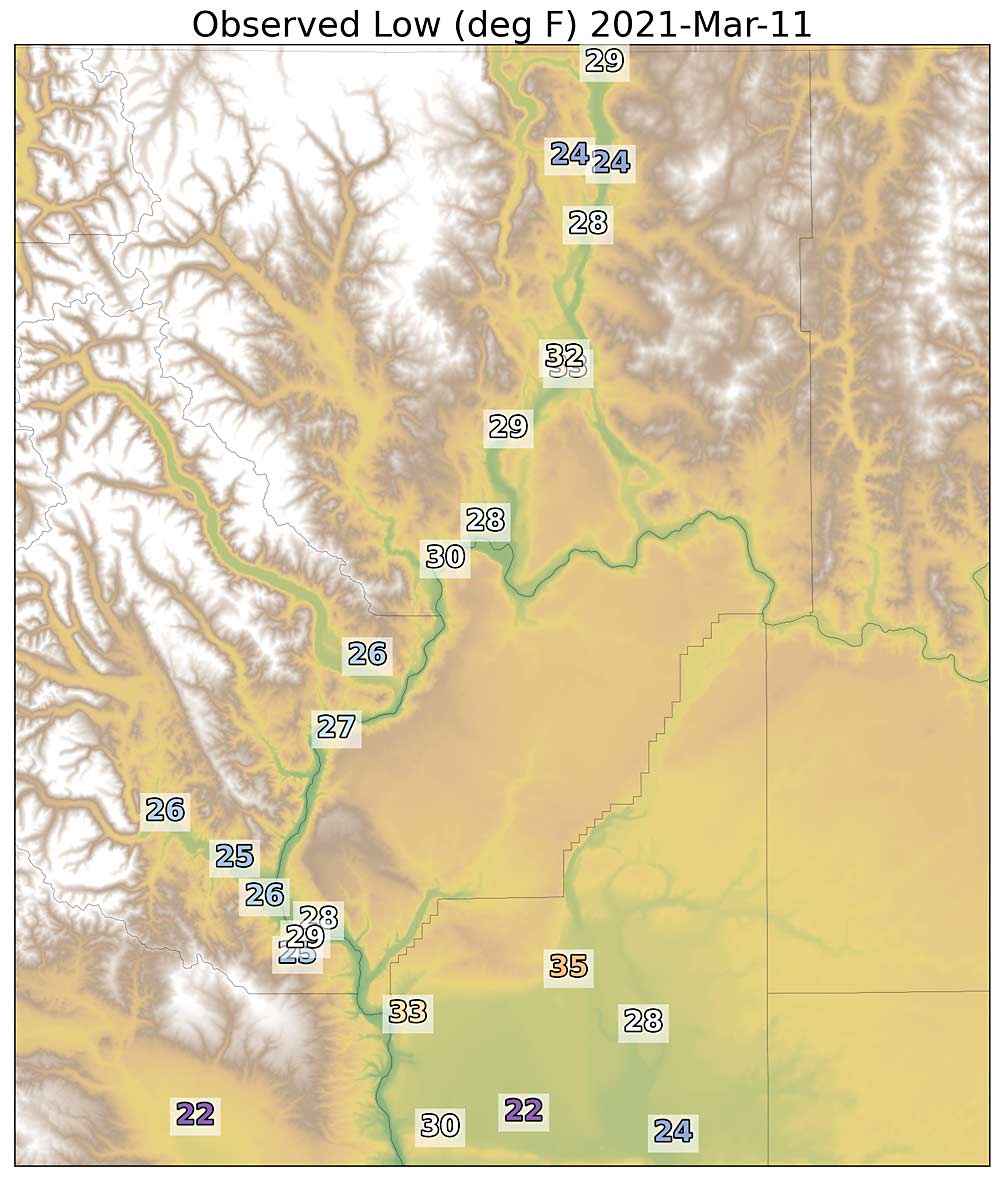
Starting March 15, frost forecasts for the Washington tree fruit industry will be available from AgWeatherNet, the regional weather service run by Washington State University.
It’s a continuation of the frost forecast program growers have relied on for decades from Clearwest meteorologists Bud Graves and Jim Holcomb, who retired in 2020. Last year, they trained AgWeatherNet meteorologist Craig Oswald and researcher Joe Zagrodnik on their approach to frost forecasts, which Zagrodnik said is both an art and a science.
“We’re doing things a little bit differently but maintaining key components of the program,” Zagrodnik said. “It’s one thing to forecast with the low temperature, but you have to pair that with growing degree-day calculations and what stage the trees are at with the risk of frost damage on any given night.”
AgWeatherNet is investing in the science, installing new network weather stations in areas with known frost risks, he said, and working with growers who submit frost reports, to learn from their expertise about the microclimates they farm.
“We hope it’s a two-way street where we can learn from growers’ expertise,” Zagrodnik said. “The longer-term goal is to have more automation and science, but there’s also all the subtleties of how complex the terrain is in these regions and the way the microclimates form and where the drainage is.”
On the website, weather.wsu.edu, spring frost forecasts will be freely available for the Okanogan Valley, the Wenatchee area, the Yakima Valley and the Central Columbia Basin from March 15 until the end of May, according to a news release from WSU. There’s also a form for users to submit frost reports.
Financial support from the Washington State Tree Fruit Association will help support the spring frost program, according to the release.
The AgWeatherNet team had a crash course in frost forecasts last season, which featured frequent frost events, but “hopefully it won’t be that crazy this year,” Zagrodnik said.
—by Kate Prengaman






Leave A Comment